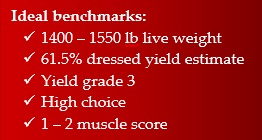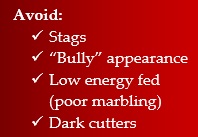Raising Holstein steers for beef continues to be a valuable market for these “dairy industry by-products.” With no differences detected in taste panels or tenderness between Holstein and Angus meat, there continues to be a demand and place for Holstein beef in the marketplace. However, getting healthy calves to raise can sometimes be an issue.

Setting up dairy bull calves for success early on is critical for their health and growth potential. Bull calves should receive colostrum just like their female counterparts. Colostrum feeding should be a stipulation when purchasing calves as a lack of colostrum can leave them more vulnerable to disease. Colostrum deprived calves may suffer an increased incidence of respiratory disease which can lead to premature death. Preweaned bull calf care should also include adequate milk or milk replacer feeding, appropriate housing, and correct castration. The former listings contribute greatly to early calfhood growth while the latter is important for long-term profitability. Incomplete castration results in bull calves that will require an addition procedure. This alone can be costly and can lead to steep carcass discounts at time of slaughter as well. Ideally, calves should also be dehorned to prevent bruising which can also result in carcass discounts.
Once weaned, group calves and begin acclimating them onto a high energy ration. Purchased calves with an unknown history or that have been on a high forage diet should be started on a lower energy diet and stepped up to the higher energy finishing ration. Keeping dairy or dairy crossbreeds on lower energy diets for too long can decrease meat quality, specifically marbling. Finishing rations should sit around 62 Mcal/cwt NEg for optimal growth and carcass development.
energy diet and stepped up to the higher energy finishing ration. Keeping dairy or dairy crossbreeds on lower energy diets for too long can decrease meat quality, specifically marbling. Finishing rations should sit around 62 Mcal/cwt NEg for optimal growth and carcass development.
A factor to keep in mind with the Holstein breed is the homogeneity of the genetics. This results in performance and qualities being very similar amongst Holstein and Holstein cross steers which can be positive or negative. Overall, dry matter intake, average daily gain, feed efficiency, and meat quality all appear very consistent. However, the percentage of death/cull steers appears to be elevated over native steers.
![]()

